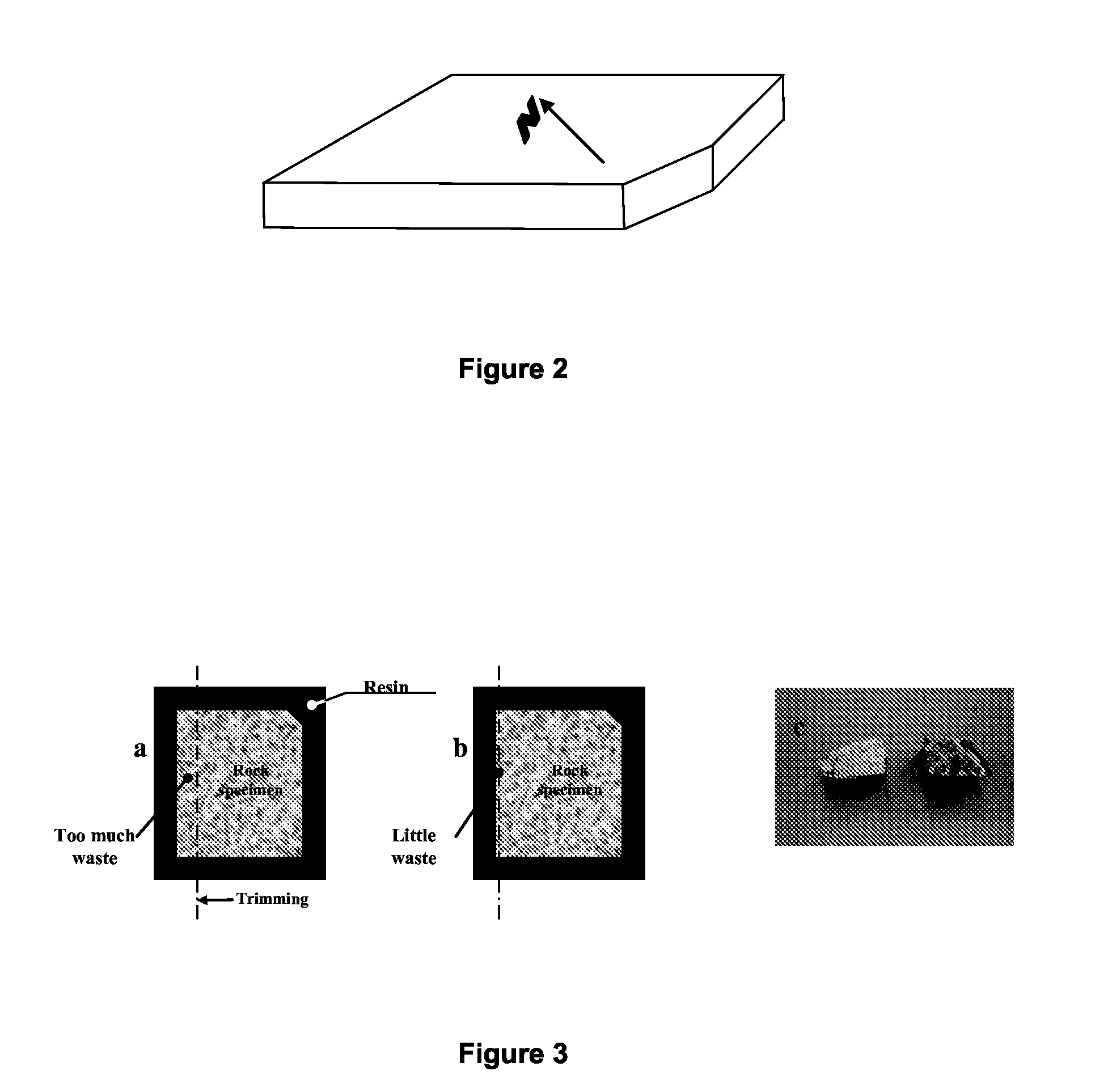Procedure for the determination of effective and total porosity of carbonated sedimentary rocks, and morphology characterization of their micro and nanopores
a carbonated sedimentary rock and morphology technology, applied in the direction of nuclear radiation detection, gravitational wave measurement, using reradiation, etc., can solve the problems of not considering the effective porosity, reducing the effective porosity of carbonated sedimentary rocks, and already difficult to observ
- Summary
- Abstract
- Description
- Claims
- Application Information
AI Technical Summary
Benefits of technology
Problems solved by technology
Method used
Image
Examples
example 1
[0277]Three samples of carbonated rocks obtained at different depths below the sea floor, in the marine zone of the Gulf of Mexico (GOM), at the Sonda de Campeche Area, were tested in step a) of the present invention, “Determination of the rock dissolution factor (FDR)”.
[0278]An acid dissolution of the rock samples was done using 20 ml of concentrated HCl, at 60 to 70 degrees Celsius and magnetic shaking for 30 minutes until the samples were fully dissolved. Next, the solution was funnel filtered with a filter paper previously brought to constant weight. The filtered fluid was received in a 100 ml volumetric flask. The solids on the filter paper were distilled-water washed and dried for 1.5 hours and its weigh was recorded; it was recorded the amount of sample used to the flask volume-mark. The results obtained are presented in Table 1.
TABLE 1FDR analysis results of rock samples, obtained from the Gulf of Mexico Marine region.“C”“B”“A”SampleFilterFilterMaterialinitialpaperpaper +Res...
example 2
[0280]Three specimens of carbonated sedimentary rocks, obtained from the Sonda de Campeche Area, were subjected to the procedures of the present invention, steps a) “Determination of the rock dissolution factor (FDR)” through p) Analysis with scanning electron microscopy techniques (SEM), as it was described in the chapter “Detailed description of the invention” underlining the following issues to determine their effective and total microporosity, as well as their corresponding fines fractions.
[0281]FDR determination (Step a) was done just as described in Example 1,
[0282]In step b) Trimming of the rock specimen, the samples used were 2 cm by 2 cm by 2 cm, before resin injection.
[0283]The specimens cleaning, step c), was done with a Soxhlet extraction column and both Xylene and Toluene.
[0284]The specimens drying, step d), was done at 100-125° C., for three hours in a convective oven.
[0285]Cleaning checking, step e), was done with the specimens still hot, until no more oil boiling was...
PUM
| Property | Measurement | Unit |
|---|---|---|
| temperature | aaaaa | aaaaa |
| densities | aaaaa | aaaaa |
| mass | aaaaa | aaaaa |
Abstract
Description
Claims
Application Information
 Login to View More
Login to View More - R&D
- Intellectual Property
- Life Sciences
- Materials
- Tech Scout
- Unparalleled Data Quality
- Higher Quality Content
- 60% Fewer Hallucinations
Browse by: Latest US Patents, China's latest patents, Technical Efficacy Thesaurus, Application Domain, Technology Topic, Popular Technical Reports.
© 2025 PatSnap. All rights reserved.Legal|Privacy policy|Modern Slavery Act Transparency Statement|Sitemap|About US| Contact US: help@patsnap.com



